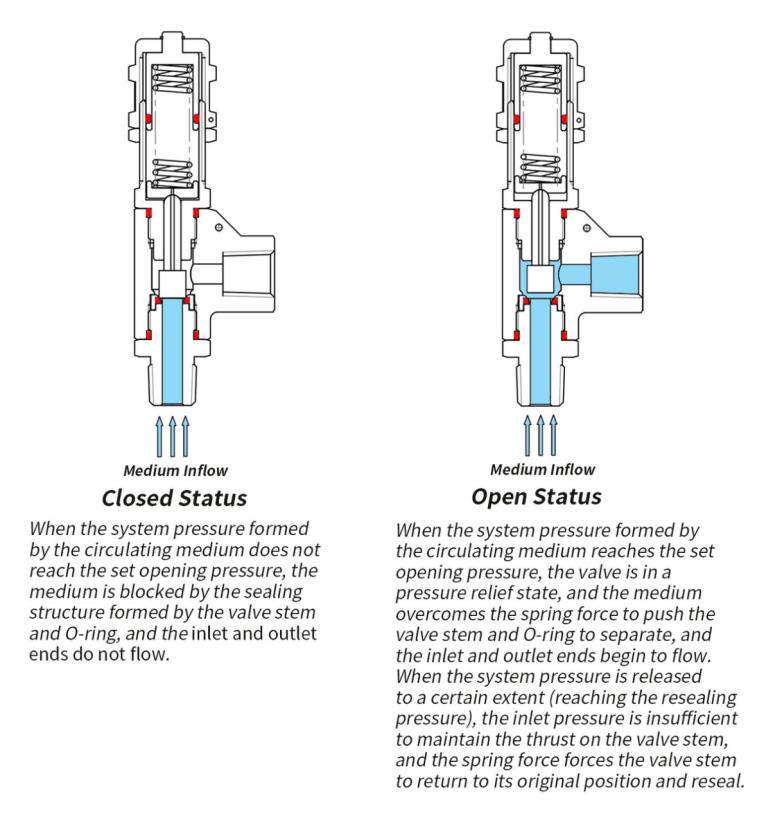Press release
A review of rectenna design (Part 1) Features and Applications
1.IntroductionRadio frequency (RF) energy harvesting (RFEH) and radiative wireless power transfer (WPT) have attracted great interest as methods to achieve battery-free sustainable wireless networks. Rectennas are the cornerstone of WPT and RFEH systems and have a significant impact on the DC power delivered to the load. The antenna elements of the rectenna directly affect the harvesting efficiency, which can vary the harvested power by several orders of magnitude. This paper reviews the antenna designs employed in WPT and ambient RFEH applications. The reported rectennas are classified according to two main criteria: the antenna rectifying impedance bandwidth and the radiation characteristics of the antenna. For each criterion, the figure of merit (FoM) for different applications is determined and reviewed comparatively.
WPT was proposed by Tesla in the early 20th century as a method to transmit thousands of horsepower. The term rectenna, which describes an antenna connected to a rectifier to harvest RF power, emerged in the 1950s for space microwave power transmission applications and to power autonomous drones. Omnidirectional, long-range WPT is constrained by the physical properties of the propagation medium (air). Therefore, commercial WPT is mainly limited to near-field non-radiative power transfer for wireless consumer electronics charging or RFID.As the power consumption of semiconductor devices and wireless sensor nodes continues to decrease, it becomes more feasible to power sensor nodes using ambient RFEH or using distributed low-power omnidirectional transmitters. Ultra-low-power wireless power systems usually consist of an RF acquisition front end, DC power and memory management, and a low-power microprocessor and transceiver.
Image: https://www.rf-miso.com/uploads/590d8ccacea92e9757900e304f6b2b7.png
Figure 1 shows the architecture of a RFEH wireless node and the commonly reported RF front-end implementations. The end-to-end efficiency of the wireless power system and the architecture of the synchronized wireless information and power transfer network depends on the performance of individual components, such as antennas, rectifiers, and power management circuits. Several literature surveys have been conducted for different parts of the system. Table 1 summarizes the power conversion stage, key components for efficient power conversion, and related literature surveys for each part. Recent literature focuses on power conversion technology, rectifier topologies, or network-aware RFEH.
Image: https://www.rf-miso.com/uploads/4e173b9f210cdbafa8533febf6b5e46.png
Figure 1
However, antenna design is not considered as a critical component in RFEH. Although some literature considers antenna bandwidth and efficiency from an overall perspective or from a specific antenna design perspective, such as miniaturized or wearable antennas, the impact of certain antenna parameters on power reception and conversion efficiency is not analyzed in detail.This paper reviews antenna design techniques in rectennas with the goal of distinguishing RFEH and WPT specific antenna design challenges from standard communication antenna design. Antennas are compared from two perspectives: end-to-end impedance matching and radiation characteristics; in each case, the FoM is identified and reviewed in the state-of-the-art (SoA) antennas.
2. Bandwidth and Matching: Non-50 ohm RF Networks
The characteristic impedance of 50 ohm is an early consideration of the compromise between attenuation and power in microwave engineering applications. In antennas, the impedance bandwidth is defined as the frequency range where the reflected power is less than 10% (S11< 10 dB). Since low noise amplifiers (LNAs), power amplifiers, and detectors are typically designed with a 50 ohm input impedance match, a 50 ohm source is traditionally referenced.
In a rectenna, the output of the antenna is directly fed into the rectifier, and the nonlinearity of the diode causes a large variation in the input impedance, with the capacitive component dominating. Assuming a 50 ohm antenna, the main challenge is to design an additional RF matching network to transform the input impedance to the impedance of the rectifier at the frequency of interest and optimize it for a specific power level. In this case, end-to-end impedance bandwidth is required to ensure efficient RF to DC conversion. Therefore, although antennas can achieve theoretically infinite or ultra-wide bandwidth using periodic elements or self-complementary geometry, the bandwidth of the rectenna will be bottlenecked by the rectifier matching network.
Several rectenna topologies have been proposed to achieve single-band and multi-band harvesting or WPT by minimizing reflections and maximizing power transfer between the antenna and the rectifier. Figure 2 shows the structures of the reported rectenna topologies, categorized by their impedance matching architecture. Table 2 shows examples of high-performance rectennas with respect to end-to-end bandwidth (in this case, FoM) for each category.
Image: https://www.rf-miso.com/uploads/86dac8404c2ca08735ba2b80f5cc66b.png
Figure 2 Rectenna topologies from the perspective of bandwidth and impedance matching. (a) Single-band rectenna with standard antenna. (b) Multiband rectenna (composed of multiple mutually coupled antennas) with one rectifier and matching network per band. (c) Broadband rectenna with multiple RF ports and separate matching networks for each band. (d) Broadband rectenna with broadband antenna and broadband matching network. (e) Single-band rectenna using electrically small antenna directly matched to the rectifier. (f) Single-band, electrically large antenna with complex impedance to conjugate with the rectifier. (g) Broadband rectenna with complex impedance to conjugate with the rectifier over a range of frequencies.
Image: https://www.rf-miso.com/uploads/7aa46aeb2c6054a9ba00592632e6a54.png
While WPT and ambient RFEH from dedicated feed are different rectenna applications, achieving end-to-end matching between antenna, rectifier and load is fundamental to achieve high power conversion efficiency (PCE) from a bandwidth perspective. Nevertheless, WPT rectennas focus more on achieving higher quality factor matching (lower S11) to improve single-band PCE at certain power levels (topologies a, e and f). The wide bandwidth of single-band WPT improves the system immunity to detuning, manufacturing defects and packaging parasitics. On the other hand, RFEH rectennas prioritize multi-band operation and belong to topologies b-d and g, as the power spectral density (PSD) of a single band is generally lower.
3. Rectangular antenna design1. Single-frequency rectennaThe antenna design of single-frequency rectenna (topology A) is mainly based on standard antenna design, such as linear polarization (LP) or circular polarization (CP) radiating patch on the ground plane, dipole antenna and inverted F antenna. Differential band rectenna is based on DC combination array configured with multiple antenna units or mixed DC and RF combination of multiple patch units.Since many of the proposed antennas are single-frequency antennas and meet the requirements of single-frequency WPT, when seeking environmental multi-frequency RFEH, multiple single-frequency antennas are combined into multi-band rectennas (topology B) with mutual coupling suppression and independent DC combination after the power management circuit to completely isolate them from the RF acquisition and conversion circuit. This requires multiple power management circuits for each band, which may reduce the efficiency of the boost converter because the DC power of a single band is low.2. Multi-band and broadband RFEH antennasEnvironmental RFEH is often associated with multi-band acquisition; therefore, a variety of techniques have been proposed for improving the bandwidth of standard antenna designs and methods for forming dual-band or band antenna arrays. In this section, we review custom antenna designs for RFEHs, as well as classic multi-band antennas with the potential to be used as rectennas.Coplanar waveguide (CPW) monopole antennas occupy less area than microstrip patch antennas at the same frequency and produce LP or CP waves, and are often used for broadband environmental rectennas. Reflection planes are used to increase isolation and improve gain, resulting in radiation patterns similar to patch antennas. Slotted coplanar waveguide antennas are used to improve impedance bandwidths for multiple frequency bands, such as 1.8-2.7 GHz or 1-3 GHz. Coupled-fed slot antennas and patch antennas are also commonly used in multi-band rectenna designs. Figure 3 shows some reported multi-band antennas that utilize more than one bandwidth improvement technique.
Image: https://www.rf-miso.com/uploads/62e35ba53dfd7ee91d48d79eb4d0114.png
Figure 3
Antenna-Rectifier Impedance Matching
Matching a 50 ohm antenna to a nonlinear rectifier is challenging because its input impedance varies greatly with frequency. In topologies A and B (Figure 2), the common matching network is an LC match using lumped elements; however, the relative bandwidth is usually lower than most communication bands. Single-band stub matching is commonly used in microwave and millimeter-wave bands below 6 GHz, and the reported millimeter-wave rectennas have an inherently narrow bandwidth because their PCE bandwidth is bottlenecked by output harmonic suppression, which makes them particularly suitable for single-band WPT applications in the 24 GHz unlicensed band.The rectennas in topologies C and D have more complex matching networks.
Fully distributed line matching networks have been proposed for broadband matching, with an RF block/DC short circuit (pass filter) at the output port or a DC blocking capacitor as a return path for diode harmonics. The rectifier components can be replaced by printed circuit board (PCB) interdigitated capacitors, which are synthesized using commercial electronic design automation tools. Other reported broadband rectenna matching networks combine lumped elements for matching to lower frequencies and distributed elements for creating an RF short at the input.Varying the input impedance observed by the load through a source (known as the source-pull technique) has been used to design a broadband rectifier with 57% relative bandwidth (1.25-2.25 GHz) and 10% higher PCE compared to lumped or distributed circuits. Although matching networks are typically designed to match antennas over the entire 50 ohm bandwidth, there are reports in the literature where broadband antennas have been connected to narrowband rectifiers.Hybrid lumped-element and distributed-element matching networks have been widely used in topologies C and D, with series inductors and capacitors being the most commonly used lumped elements. These avoid complex structures such as interdigitated capacitors, which require more accurate modeling and fabrication than standard microstrip lines.
The input power to the rectifier affects the input impedance due to the nonlinearity of the diode. Therefore, the rectenna is designed to maximize the PCE for a specific input power level and load impedance. Since diodes are primarily capacitive high impedance at frequencies below 3 GHz, broadband rectennas that eliminate matching networks or minimize simplified matching circuits have been focused on frequencies Prf>0 dBm and above 1 GHz, since the diodes have low capacitive impedance and can be well matched to the antenna, thus avoiding the design of antennas with input reactances >1,000 ohm .Adaptive or reconfigurable impedance matching has been seen in CMOS rectennas, where the matching network consists of on-chip capacitor banks and inductors. Static CMOS matching networks have also been proposed for standard 50 ohm antennas as well as co-designed loop antennas. It has been reported that passive CMOS power detectors are used to control switches that direct the output of the antenna to different rectifiers and matching networks depending on the available power. A reconfigurable matching network using lumped tunable capacitors has been proposed, which is tuned by fine-tuning while measuring the input impedance using a vector network analyzer. In reconfigurable microstrip matching networks, field effect transistor switches have been used to adjust the matching stubs to achieve dual-band characteristics.
To learn more about antennas, please visit:
E-mail: info@rf-miso.com [https://www.rf-miso.com/contact-us/]
Phone: 0086-028-82695327
Website: www.rf-miso.com [https://www.rf-miso.com/]
Media Contact
Company Name: Chengdu RF Miso Co., Ltd.
Email:Send Email [https://www.abnewswire.com/email_contact_us.php?pr=a-review-of-rectenna-design-part-1]
Country: China
Website: https://www.rf-miso.com/
This release was published on openPR.
Permanent link to this press release:
Copy
Please set a link in the press area of your homepage to this press release on openPR. openPR disclaims liability for any content contained in this release.
You can edit or delete your press release A review of rectenna design (Part 1) Features and Applications here
News-ID: 3620199 • Views: …
More Releases from ABNewswire

How to Choose the Right Button Switch in the Food Industry
In the food industry, hygiene and safety are paramount. Frequent cleaning in production environments requires push buttons to possess excellent waterproof performance to ensure long-term, stable operation. As a critical component in equipment operation, the quality of push button switches directly impacts production efficiency and food safety. So, how do you choose the right waterproof metal push [https://www.onpowbutton.com/metal-push-button-switch/]button switch [https://www.onpowbutton.com/metal-push-button-switch/]?
Image: https://www.abnewswire.com/upload/2025/11/55217b810e09d95a489bfc40e8051e2c.jpg
1. Waterproof Rating: IP67 or IP68?
The IP rating is a…

Touch switches are integrated into medical devices to optimize medical operation …
Medical devices are a core component of the healthcare system, and their significance runs through the entire process of disease prevention, diagnosis, treatment, and rehabilitation.
They not only directly relate to patients' life safety and treatment effects but also profoundly affect the development of the medical industry, public health emergency response capabilities, and even the implementation of national health strategies. Today, we would like to introduce a product that serves as…

Vaccine Cold Chain Services: Safe Delivery, Compliance & Sustainability 2025
Vaccine Cold Chain Services: What Ensures Potent Vaccines in 2025?
Keeping vaccines safe isn't just about refrigeration; it's about a network of services that store, package, transport and monitor each vial from factory to arm. In 2025 experts estimate that up to half of vaccines are lost because temperature control fails, costing approximately US$34.1 billion annually. If you manage immunization programs, work in supply chain or operate a clinic, you need…

Proportional Relief Valve RV4 - Designed for Precision
As an overpressure protection component, the principle of the proportional relief valve [https://www.hikelok.com/proportional-relief-valves/] is that when the system pressure exceeds the set pressure value, the valve stem rises to release the system pressure, thereby protecting the system and other components from damage.
Image: https://www.hikelok.com/uploads/%E6%9C%AA%E6%A0%87%E9%A2%98-11.jpg
Due to the need to maintain sealing under normal pressure, the proportional relief valve requires a first seal. When overpressure is released, the proportional relief valve needs to…
